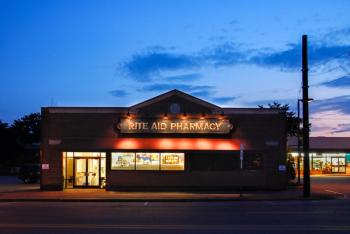
The Impact of Pharmacy Expenditures on High Resource Patients
Treatments for back disorders and osteoarthritis are the greatest expenses for both the high resource patient and general populations.
Half of all health care dollars are spent on high resource patients (HRP), but what are their biggest expenses?
Health care spending in the United States doubled from 2000 to 2010. Although the explosion of utilization costs has been moderated by the Affordable Care Act (ACA), health care spending still is projected to outpace the rate of economic growth in the near future. For all stakeholders, more work still needs to be done to control costs.
What are the biggest contributors to health care costs? That is a question more easily asked than answered, as it depends which way you carve out spending categories. For example, in the general population, 50% of all health care dollars are spent on outpatient services, while less than 25% go toward either pharmacy or inpatient services.
Yet, the top 5% of HRPs account for 50% of all spending. Their inpatient costs are significantly higher, proportionately and per capita, than those of the general population.
A retrospective observational study published in the Journal of Managed Care & Specialty Pharmacy endeavored to look more closely at the HRP population to find patterns in their spending, compare those patterns to the general population, and determine which health conditions might be associated with the highest costs.
Researchers paid particular attention to physician-administered pharmacy expenditures, to see what impact they may have on total HRP spend.
Healthcare Spending on High Resource Patients
A total sample of 15,587,257 people of all ages, with continuous enrollment for 180 days prior to January 1, 2011, was identified from a managed care database comprising more than 80 US health plans. Of this sample, 779,364 were identified as HRPs. The median age for the general population was 36 years, whereas the median age for the HRP population was 52 years.
The 2011 mean expenditure per HRP was more than 10 times higher than that of the general population ($43,104 versus $3955).
Treatment for back disorders and osteoarthritis contributed the largest share of expense for both the HRP and general populations. Additionally, chronic renal failure, heart disease, and some oncology treatments accounted for disproportionately higher costs for HRPs.
Spending patterns differed for HRP versus the general population. Inpatient services took up a larger share of expense for HRPs (40%) versus the general population (24.6%). HRPs spent less of a share on pharmacy (18.1% versus 21.4%) and outpatient services (41.9% versus 54.1%) compared with the general population. These patterns were demonstrated across all payer types.
How Do Prescription Drug Costs Impact High Resource Patients?
Although use of physician-administered pharmaceuticals was slightly higher for HRPs, that did not alter the spending pattern. This study found no evidence that pharmaceuticals are a main contributor to HRP costs. If anything, medication adherence may have the potential to reduce the incidence and cost of hospitalization and disability.
The category where HRP spending exceeds general spending the most is inpatient service, followed by outpatient service. Preventing hospitalization for HRPs should be a primary goal in the reduction of total health care costs. Managed care pharmacy decisions should consider distribution of resources in the places of service and in the treatment of health conditions that are most prevalent within the HRP population, as illustrated in this study.
Newsletter
Stay informed on drug updates, treatment guidelines, and pharmacy practice trends—subscribe to Pharmacy Times for weekly clinical insights.




















































































































































































































